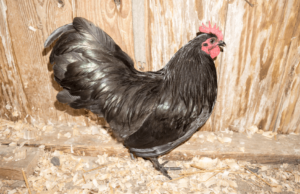
Introduction
In recent years, the phrase “like watery coffee NYT” has become popular among coffee enthusiasts and casual drinkers alike. This expression often arises in discussions about coffee quality, particularly in reference to the New York Times’ coffee reviews.
This article aims to provide a comprehensive understanding of what “like watery coffee NYT” means, why it has become a buzzword, and how it reflects broader trends in coffee culture. We’ll also explore the implications for coffee lovers, baristas, and the coffee industry at large.
The Origin of “Like Watery Coffee NYT”
Understanding the Phrase
“Like watery coffee NYT” is a colloquial expression rooted in the critical reviews and opinion pieces published by the New York Times. The NYT has long been a trusted source for food and beverage critiques, including coffee. However, some readers and coffee enthusiasts have noted that certain reviews seem to prefer lighter, less robust coffee profiles, which they perceive as “watery.”
The New York Times’ Influence on Coffee Culture
The New York Times holds significant influence over public opinion, including in the realm of food and beverage. Their coffee reviews are no exception. When the NYT publishes a review favoring a particular type of coffee, it often shapes consumer preferences and industry trends. The term “like watery coffee NYT” emerged as a critique of this perceived bias towards lighter coffee.
The Coffee Spectrum: Light to Dark
Light Roast Coffee
Light roast coffee is known for its bright flavors, higher acidity, and more nuanced taste profiles. It is often favored by those who appreciate a more complex and delicate coffee experience. This roast retains more of the bean’s original flavors, which can include floral, fruity, and herbal notes.
Dark Roast Coffee
In contrast, dark roast coffee offers a bolder, richer flavor profile with lower acidity. It tends to have more chocolatey, nutty, and caramel-like flavors. Dark roasts are often preferred by those who enjoy a more robust and full-bodied coffee experience.
The Middle Ground: Medium Roast
Medium roast coffee strikes a balance between light and dark roasts. It offers a blend of the original bean flavors with the roast-induced notes. This roast is often seen as the most versatile, appealing to a wide range of coffee drinkers.
The Debate: Watery vs. Robust Coffee
Preferences and Perceptions
The phrase “like watery coffee NYT” highlights the subjective nature of coffee preferences. Some individuals perceive lighter roasts as watery or lacking in depth, while others appreciate their subtle complexities. This debate is a microcosm of the larger conversation about coffee quality and preference.
Cultural Influences on Coffee Preferences
Cultural background plays a significant role in shaping coffee preferences. In some cultures, lighter roasts are traditional and highly valued, while in others, darker, stronger coffee is the norm. The NYT’s perceived preference for lighter coffee can be seen as reflective of broader cultural trends and tastes.
The Science of Coffee Extraction
The Role of Extraction
Extraction is the process of dissolving the desirable flavors from coffee grounds into water. The balance of extraction is crucial in determining whether a coffee is perceived as watery or robust. Under-extraction can lead to a weak, sour taste, while over-extraction can result in bitterness.
Factors Affecting Extraction
Several factors influence coffee extraction, including grind size, water temperature, brew time, and coffee-to-water ratio. Achieving the perfect balance requires careful attention to these variables, and different roast levels may require adjustments to optimize flavor.
NYT’s Coffee Review Methodology
Review Criteria
The New York Times employs a rigorous methodology for reviewing coffee. This includes blind taste tests, detailed flavor profiling, and consideration of factors such as origin, roast level, and brewing method. Despite this thorough approach, individual reviewer preferences inevitably play a role.
Notable Reviews and Their Impact
Over the years, several NYT coffee reviews have sparked significant discussion within the coffee community. These reviews often highlight emerging trends, new roasters, and innovative brewing methods, influencing consumer choices and industry practices.
Insights and Interpretations
The Power of Media Influence
The influence of the New York Times on coffee culture cannot be overstated. Their reviews shape consumer perceptions and industry standards. Understanding this influence helps explain the emergence of the term “like watery coffee NYT” as a critique and a cultural touchstone.
Navigating Personal Preferences
For coffee lovers, navigating personal preferences in the context of influential reviews can be challenging. It is essential to remember that coffee enjoyment is subjective, and finding one’s preferred flavor profile may require exploration beyond popular opinions.
The Coffee Industry’s Response
Adaptation and Innovation
The coffee industry continuously adapts to changing consumer preferences and media influences. Roasters and coffee shops often experiment with different roast levels and brewing methods to cater to diverse tastes. The term “like watery coffee NYT” has prompted some in the industry to emphasize the importance of offering a range of coffee options.
Educating Consumers
Many coffee professionals see an opportunity to educate consumers about the complexities of coffee flavors and the factors that influence them. By providing information and tastings, they aim to empower individuals to make informed choices based on their preferences.
FAQs about “Like Watery Coffee NYT”
What does “like watery coffee NYT” mean?
The phrase “like watery coffee NYT” refers to the perception that the New York Times’ coffee reviews tend to favor lighter, less robust coffee profiles, which some individuals describe as watery.
Why is there a debate over coffee roast levels?
The debate over coffee roast levels stems from personal preferences and cultural influences. Some people prefer the bright, nuanced flavors of light roasts, while others enjoy the rich, bold taste of dark roasts.
How does the New York Times review coffee?
The New York Times reviews coffee through blind taste tests, detailed flavor profiling, and consideration of factors such as origin, roast level, and brewing method. These reviews often influence consumer preferences and industry trends.
How can I find my preferred coffee roast level?
Finding your preferred coffee roast level may require experimentation. Try different roasts and brewing methods to discover which flavors and profiles you enjoy the most. Visiting local coffee shops and participating in tastings can also help.
What impact does media influence have on the coffee industry?
Media influence, particularly from reputable sources like the New York Times, significantly impacts the coffee industry. Reviews shape consumer perceptions, drive trends, and encourage innovation among roasters and coffee shops.
Conclusion
The phrase “like watery coffee NYT” encapsulates a fascinating intersection of media influence, personal preference, and cultural trends in the coffee world. By understanding the origins and implications of this term, coffee lovers can better navigate their own preferences and appreciate the diverse landscape of coffee flavors.
As the coffee industry continues to evolve, the ongoing dialogue around coffee quality and taste will undoubtedly shape future trends and innovations.like watery coffee nytlike watery coffee nyt.

